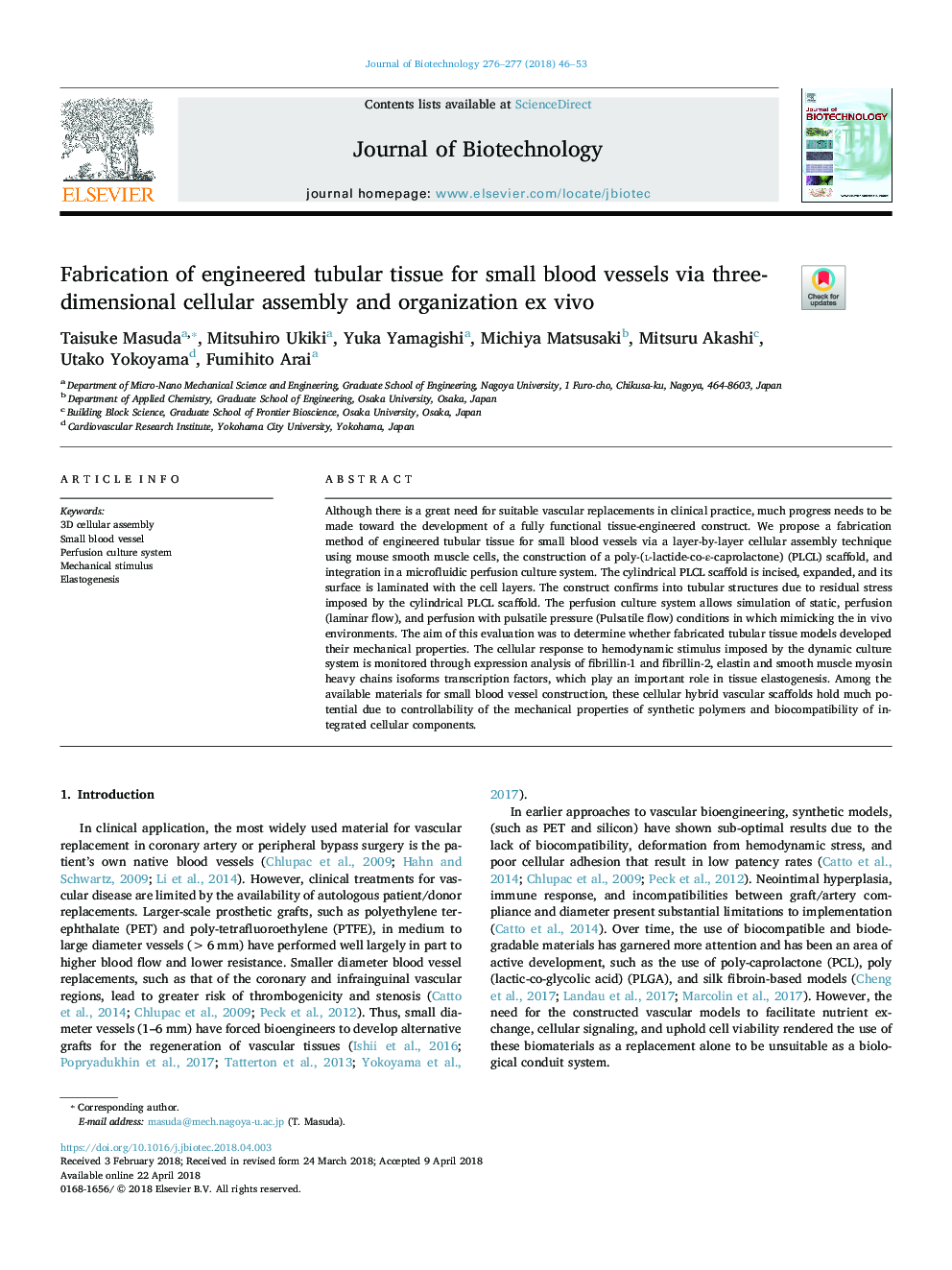| Article ID | Journal | Published Year | Pages | File Type |
|---|---|---|---|---|
| 6490299 | Journal of Biotechnology | 2018 | 8 Pages |
Abstract
Although there is a great need for suitable vascular replacements in clinical practice, much progress needs to be made toward the development of a fully functional tissue-engineered construct. We propose a fabrication method of engineered tubular tissue for small blood vessels via a layer-by-layer cellular assembly technique using mouse smooth muscle cells, the construction of a poly-(l-lactide-co-ε-caprolactone) (PLCL) scaffold, and integration in a microfluidic perfusion culture system. The cylindrical PLCL scaffold is incised, expanded, and its surface is laminated with the cell layers. The construct confirms into tubular structures due to residual stress imposed by the cylindrical PLCL scaffold. The perfusion culture system allows simulation of static, perfusion (laminar flow), and perfusion with pulsatile pressure (Pulsatile flow) conditions in which mimicking the in vivo environments. The aim of this evaluation was to determine whether fabricated tubular tissue models developed their mechanical properties. The cellular response to hemodynamic stimulus imposed by the dynamic culture system is monitored through expression analysis of fibrillin-1 and fibrillin-2, elastin and smooth muscle myosin heavy chains isoforms transcription factors, which play an important role in tissue elastogenesis. Among the available materials for small blood vessel construction, these cellular hybrid vascular scaffolds hold much potential due to controllability of the mechanical properties of synthetic polymers and biocompatibility of integrated cellular components.
Keywords
Related Topics
Physical Sciences and Engineering
Chemical Engineering
Bioengineering
Authors
Taisuke Masuda, Mitsuhiro Ukiki, Yuka Yamagishi, Michiya Matsusaki, Mitsuru Akashi, Utako Yokoyama, Fumihito Arai,
